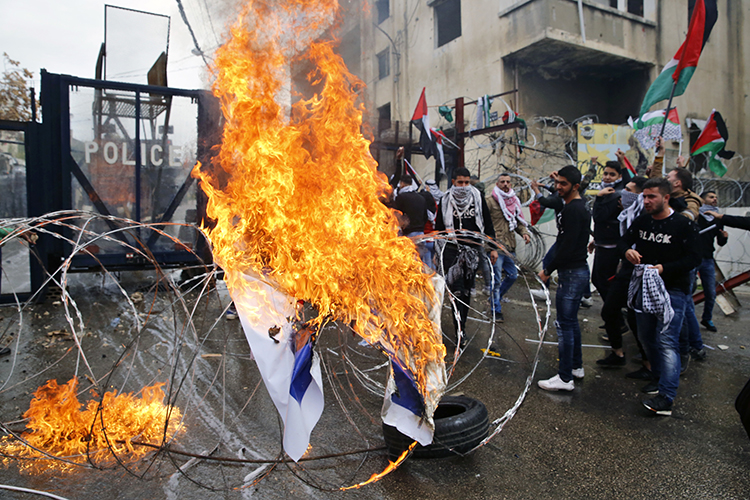Protests and violence have broken out in several cities over President Donald Trump’s announcement on December 7 that the U.S. will recognize Jerusalem as the capital of Israel, according to reports. As well as unrest in Jerusalem, the West Bank, and Gaza, protesters demonstrated in Lebanon, Turkey, Morocco, and Indonesia, reports said. Several journalists covering the unrest were injured, including by rubber bullets and tear gas canisters, according to the local press freedom groups Palestinian Center for Development and Media Freedoms and Center for Defending Freedom of Journalists.
CPJ’s Emergencies Response Team (ERT) has issued the following safety advisory for journalists covering or planning to cover the protests:
Preparation
- Plan the assignment and ensure that you have a full battery on your cell phone. Know the area you are going to. Work out in advance what to do in an emergency.
- Always try to work with a colleague and have a regular check-in procedure with your base–particularly if covering rallies or crowded events.
- Wear clothing and footwear that allows you to move swiftly. Avoid loose clothing and lanyards that can be grabbed, as well as flammable material, such as nylon.
- Consider your position. Try to find an elevated position that may offer greater safety.
- At any location, always plan an evacuation route. If working with others, select an emergency rendezvous point.
- Maintain situational awareness at all times and limit valuables in your possession. Do not leave any equipment in vehicles. After dark, the risk of criminal actions increases.
- If working in a crowd, plan a strategy. Try to keep to the outside of the crowd and avoid the middle, where it is hard to escape. Identify an escape route.
In situations where teargas may be used
- Wear personal protective equipment, including a gas mask, eye protection, body armor, and helmet.
- Contact lenses are not advisable.
- Individuals with asthma or respiratory issues should avoid areas where teargas is being used. When large amounts of teargas are used, there is the possibility of high concentrations of gas sitting in areas with no movement of air.
- Take note of landmarks (i.e. posts, curbs) that can be used to help you navigate out of an area if you are struggling to see.
- If you are exposed to teargas, try to find higher ground and stand in fresh air to allow the breeze to carry away the gas. Do not rub your eyes or face. When you are able to, shower in cold water to wash the gas from your skin, but do not bathe. Clothing may need to be washed several times to remove the crystals completely, or discarded.
When dealing with aggression
- Read body language and use your own body language to pacify a situation.
- Keep eye contact with an aggressor, use open hand gestures and keep talking with a calming manner.
- Keep an extended arm’s length from the threat. Back away and if someone grabs hold of you, break away firmly without aggression. If cornered and in danger, shout.
- If the situation escalates, keep a hand free to protect your head and move with short, deliberate steps to avoid falling. If in a team, stick together and link arms.
- Be aware of the situation and your own safety. While there are times when documenting aggression can be newsworthy, taking pictures of aggressive individuals can escalate a situation.
If you are attacked, threatened or otherwise intimidated while covering these events, you can contact CPJ by emailing report_violation@cpj.org.
For more information on basic preparedness, assessing and responding to risk, or covering safety measures when covering civil conflict and disturbances, we encourage journalists to review CPJ’s Journalist Security Guide.
